Outline
- data types/concepts
- people behaviour
- tuning/predictions
Data privacy
- handover between cells - calls/internet package
- no content/size information
- new hashed id every day
- no group (age, device, zip...) below 30 people
event collection

We collect an handover between cells per device (D1-Netz)
Events to movements

We groups events into activities and trips
Activity probability
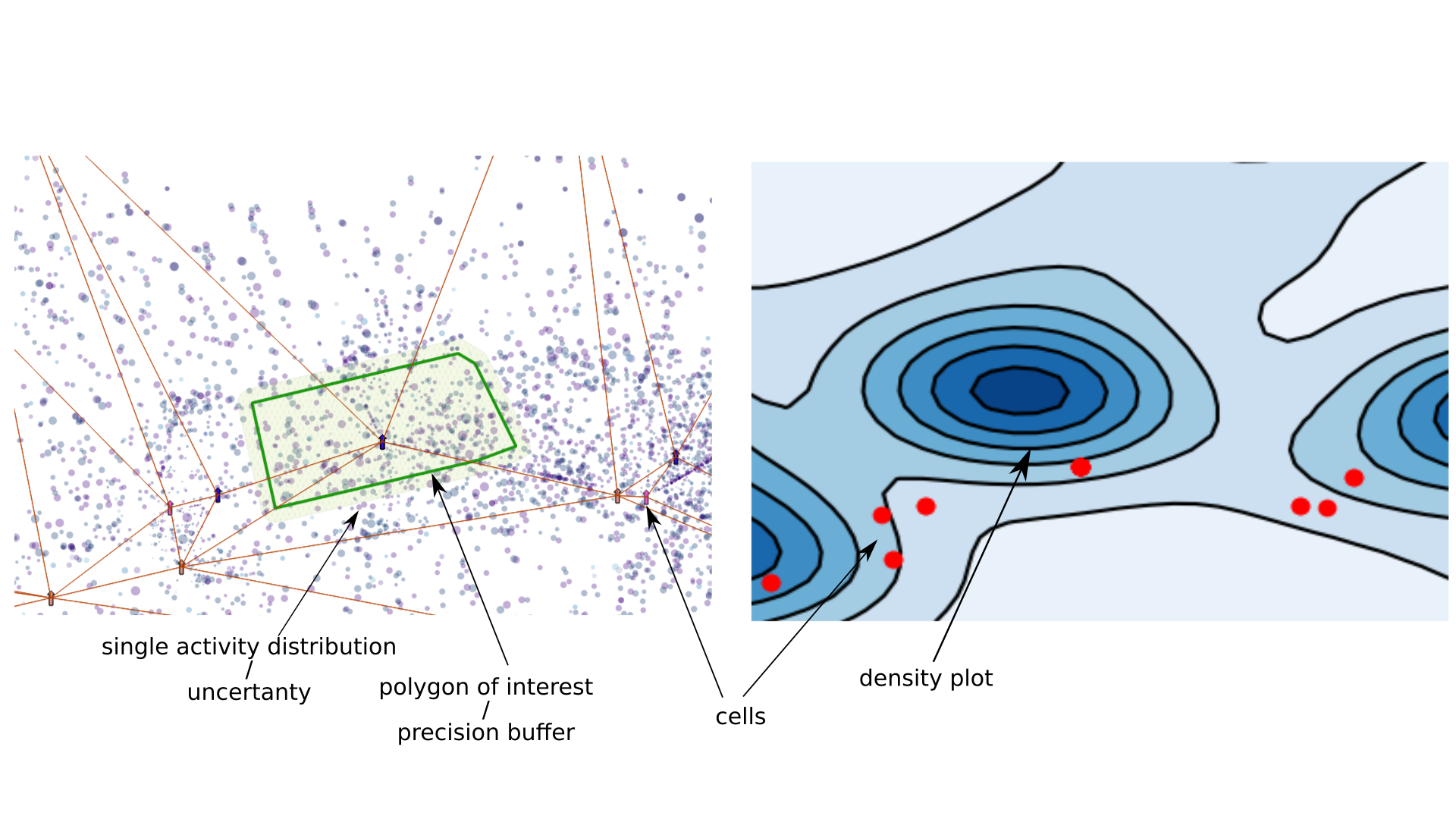
Density probability of activities between cells
User's behaviour

Different signaling patterns during the day
Daily patterns

People have different patterns every day
Tourist patterns
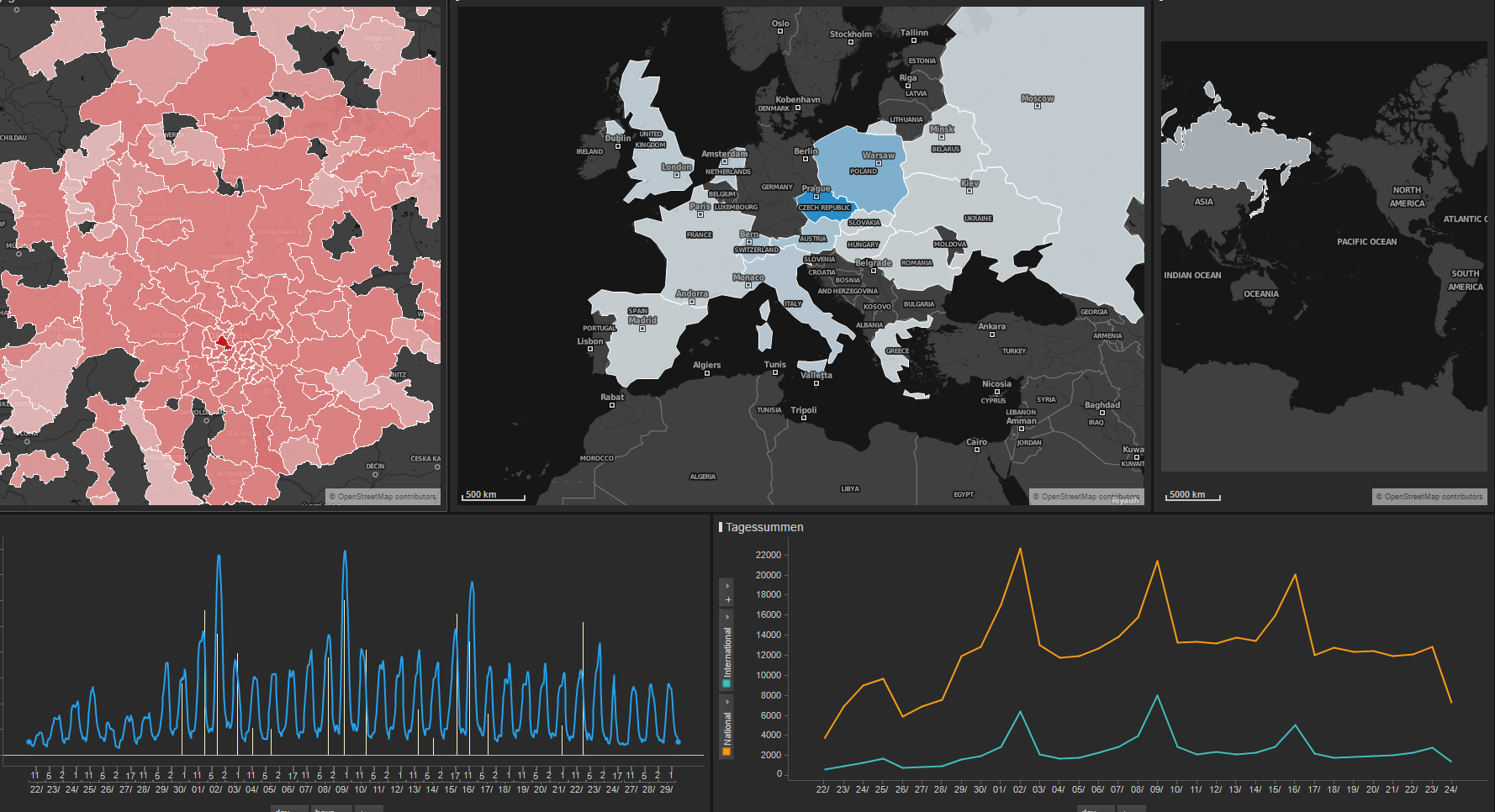
Split nationality, origin, counting activities
age, gender, device types

Distribution of age classes per zip code
From cells to routes
- Interpret cell connection during a trip
- Understand mode of transportation
- Calculate most probable route
- Count people
movements across the country

How people move during a day
Most frequent origin and destination
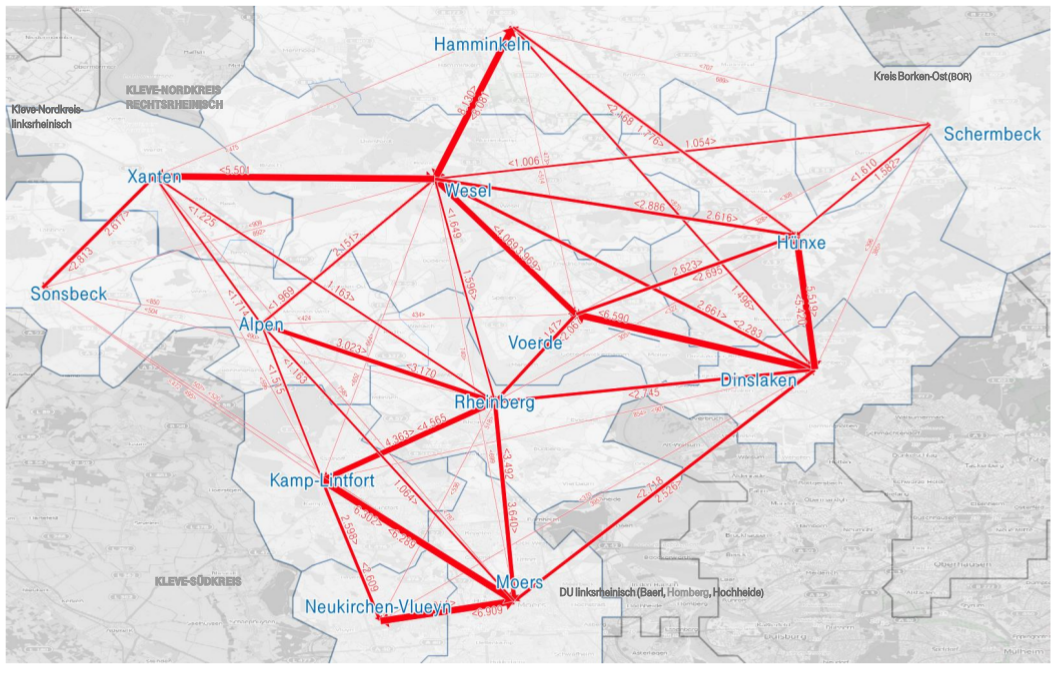
important for local transportation companies
routing/infrastructure
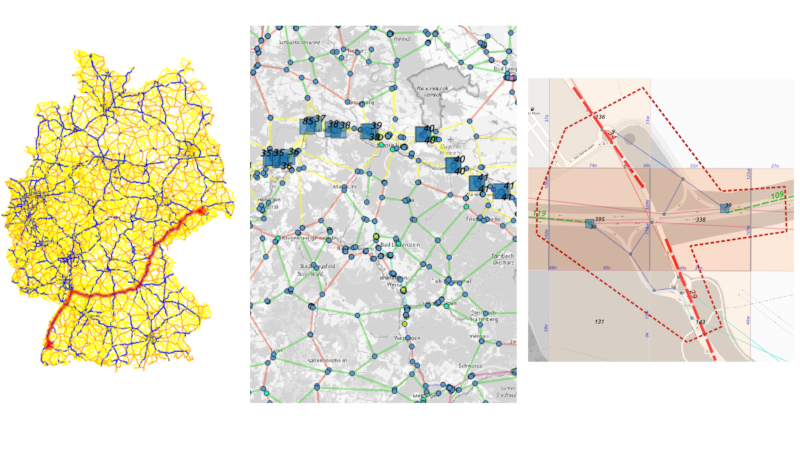
we work on an efficient routing and infrastructure
local network

Special modules consider city centers
subway module

Distinguish the mean of transportation labelling cells (training data)
subway passangers

Collecting information about commuters
Use of information
- activities, footfalls, section counts
- points of interest/geo context
- statistical geographical population data
- public/training reference data
Intensity of activities
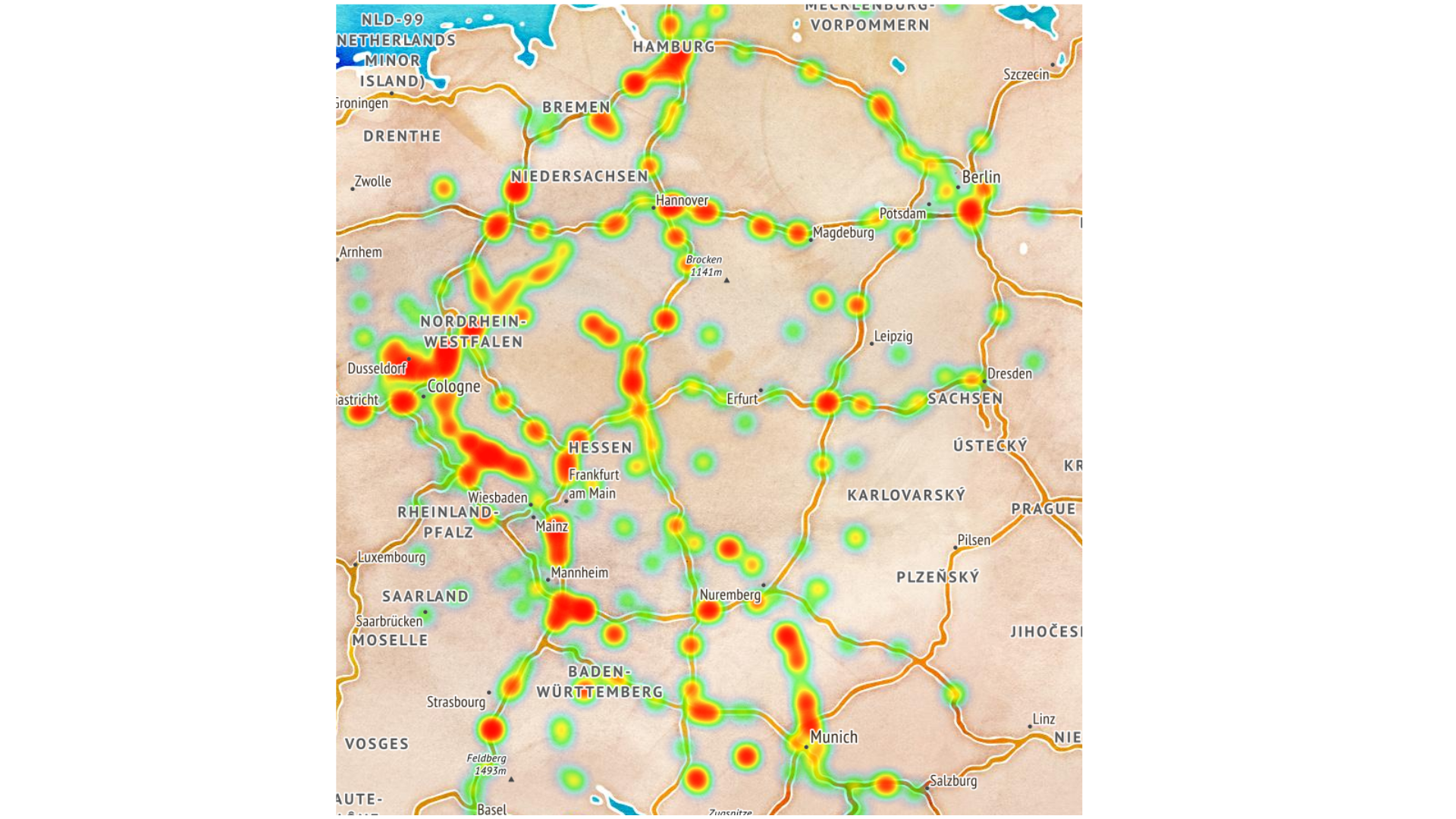
Activity intensity: breaks of motorway drivers
geographical data
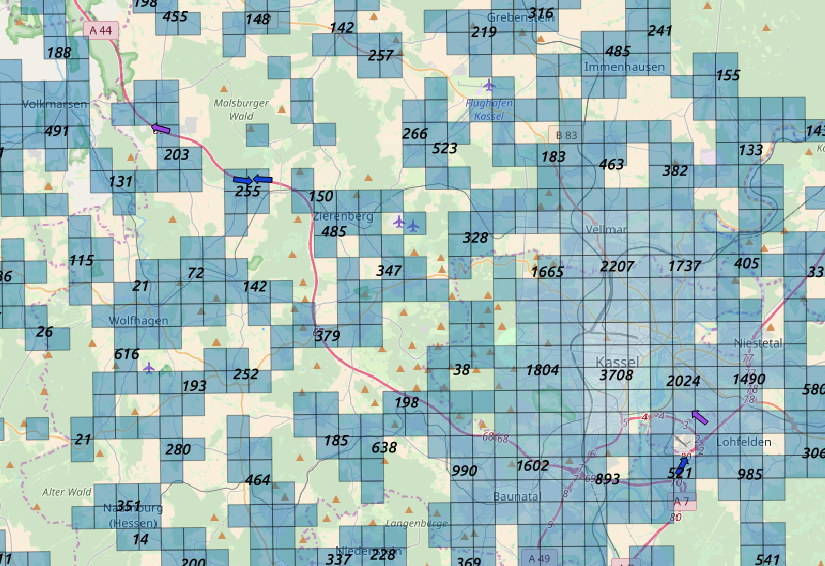
Validate results with statistical data (population density)
collect important features
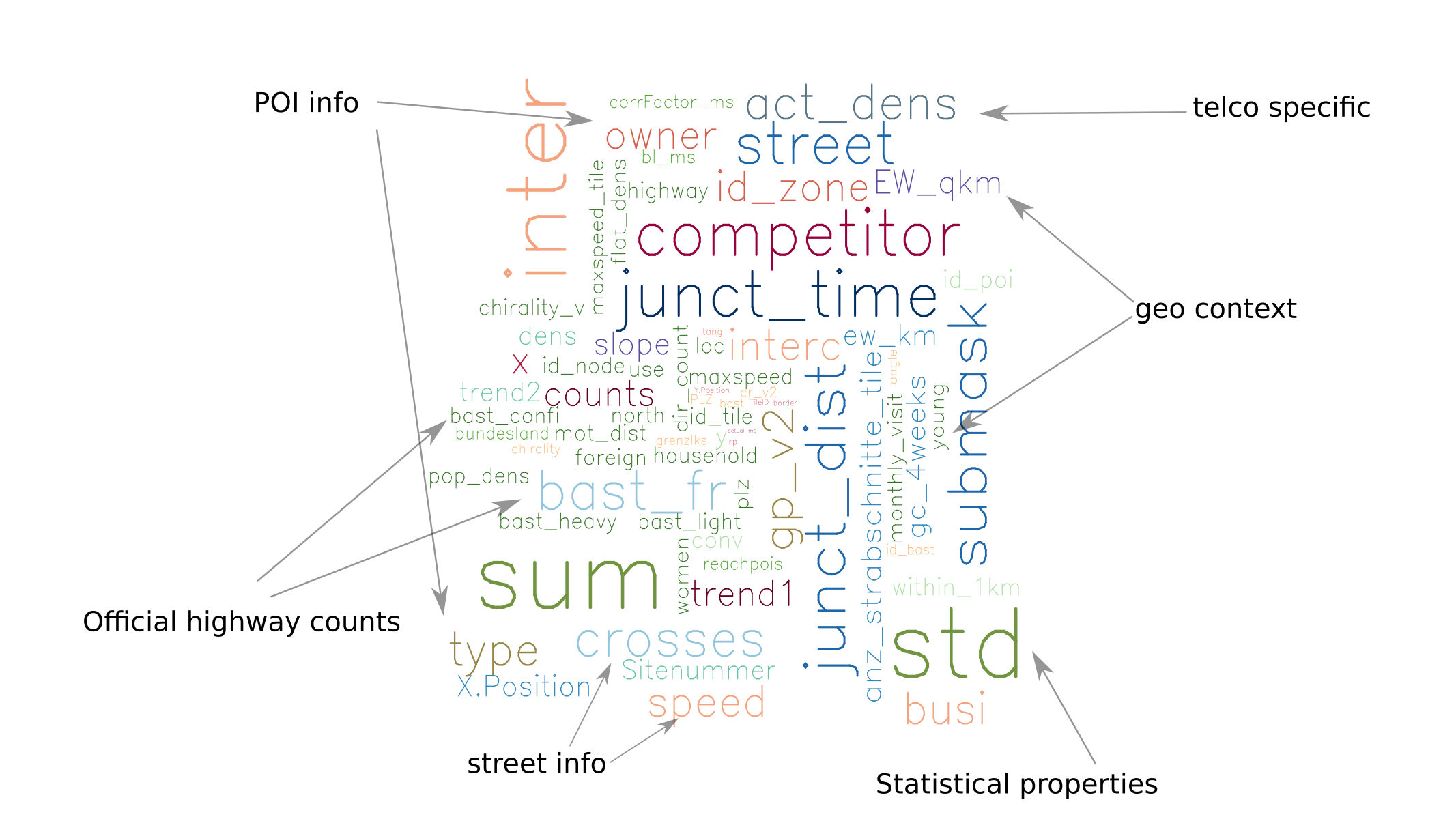
we select the most relevant features
training set
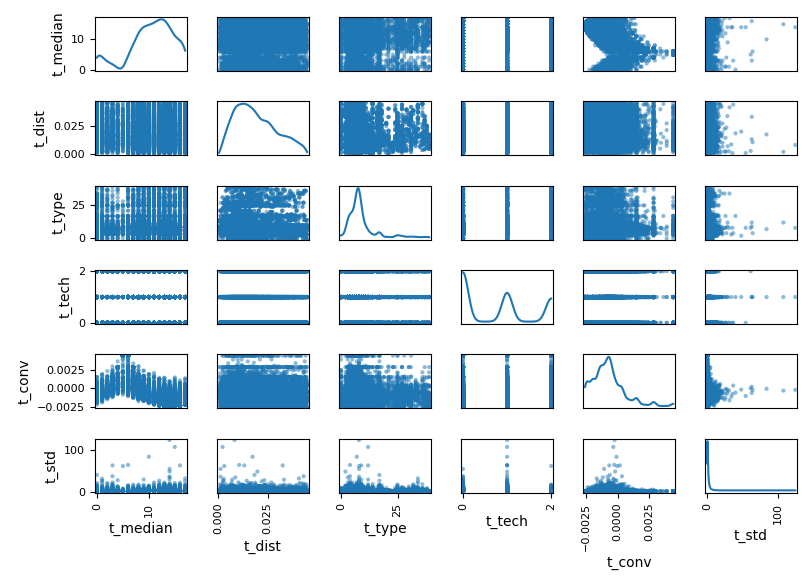
geographical information to train system
training
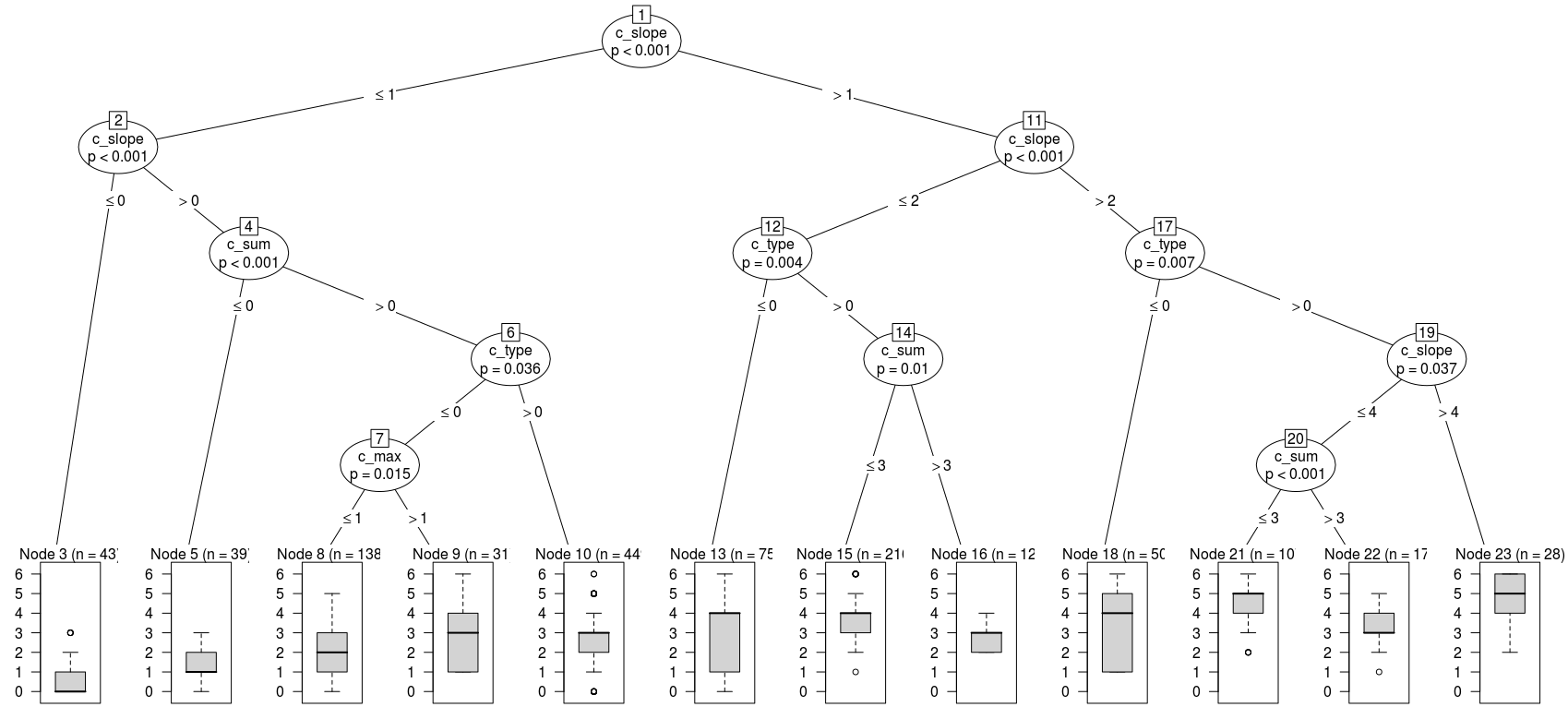
We train our models to predict success
compare external sources

Public information from different sources
forecast
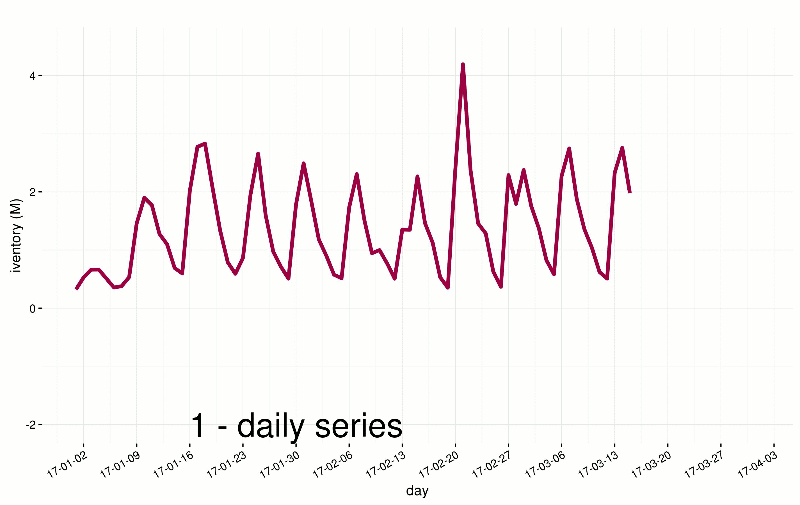
We use past time series for forecasting events
mapping on offer
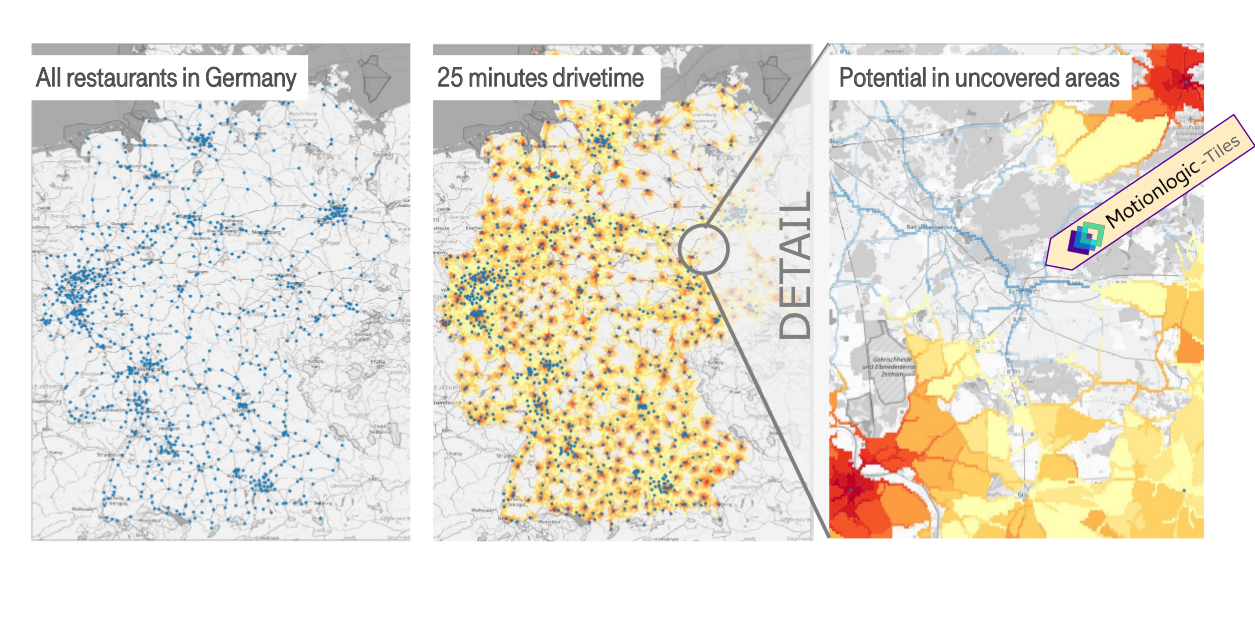
Calculate the coverage of a commercial activity
whitespot analysis
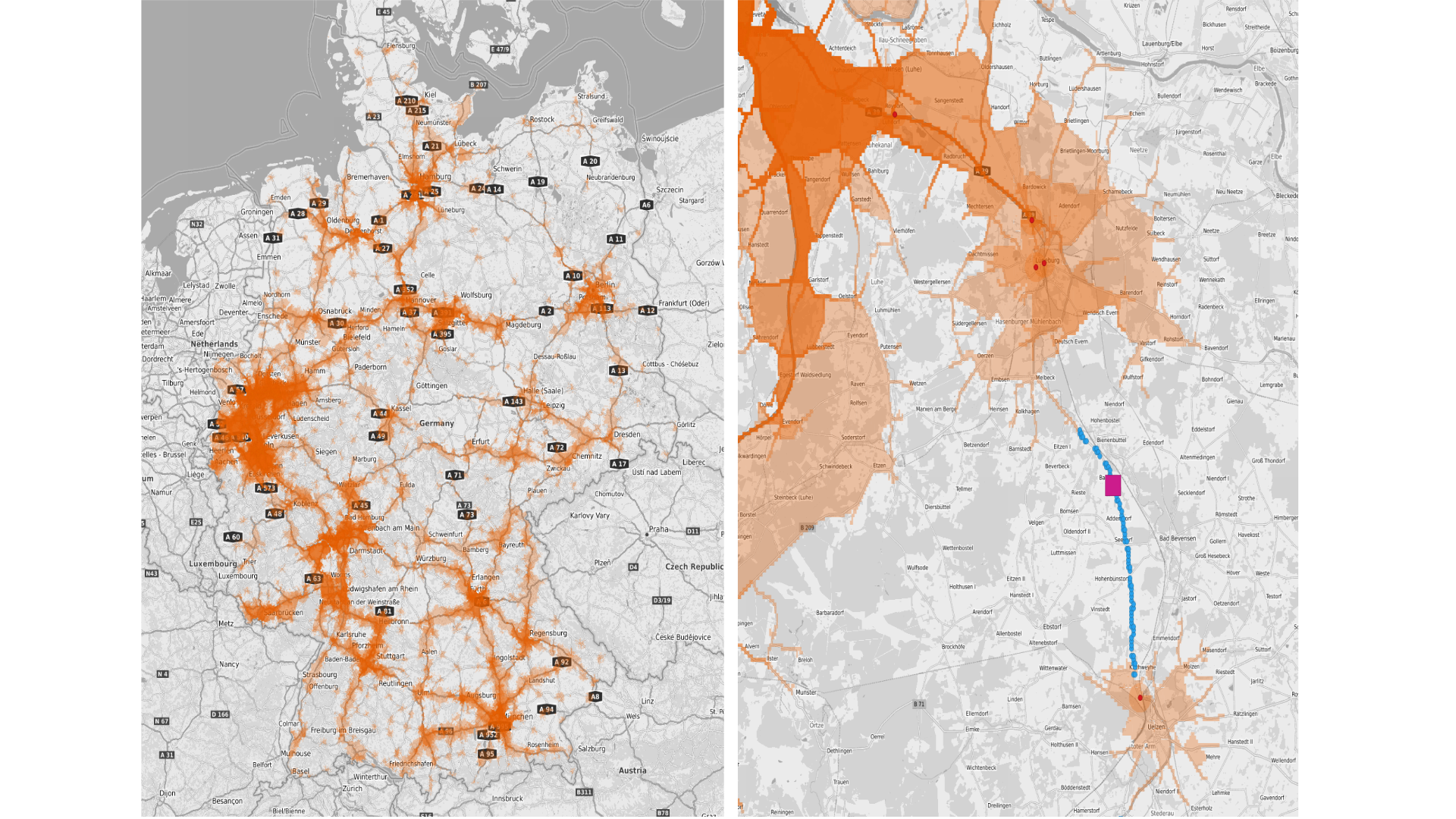
Customer potential on regions not covered within a isochrone
Thank you
for your attention















